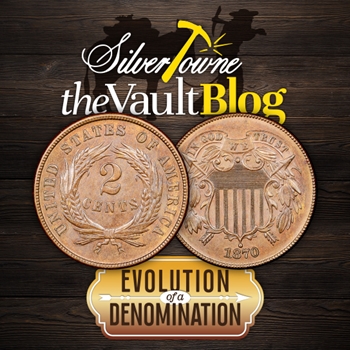
Nearly two years into the American Civil War, it became apparent that there was a significant shortage of United States coinage. War-torn and frightened of its outcome, Americans were hoarding all the coins they could get their hands on. In response to this issue, certain businessmen came up with a replacement that would come in the form of cent-sized bronze tokens. These are now known as “Civil War Tokens” and were widely accepted as a money substitute.
The success of the tokens gave the Mint grounds to prepare for a one-cent piece using the wartime emergency coins as an example. During this time, they also thought seriously about a two-cent piece hoping to pacify the shortage even more. By December of 1863, Mint Director James Pollock wrote to the Secretary of the Treasury requesting the issuance of a two-cent piece in French bronze. Fast forward to the Act of April 22, 1864, and thus began the very short journey of the bronze two-cent piece.
Two-Cent Piece (1864-1873)
While also changing the weight and composition of the cent coin, the Act of April 22, 1864, also included an arrangement for the bronze two-cent piece to be produced. Designed by James B. Longacre, the coins were all minted at Philadelphia and were one of the shortest-lived United States coinage pieces ever.
The motto ‘IN GOD WE TRUST’ also appeared for the first time on the new coin on the reverse in its first year of issue. However, from that first year, there were two varieties issued: the small motto and the large motto. The small motto is more scarce of the two. Both circulation and Proof strikes were produced from the Mint with the largest amount produced in 1864 with nearly 20,000,000. Each year, the mintages got lower and lower with the last year (1873) only producing 600 Proof strikes.







